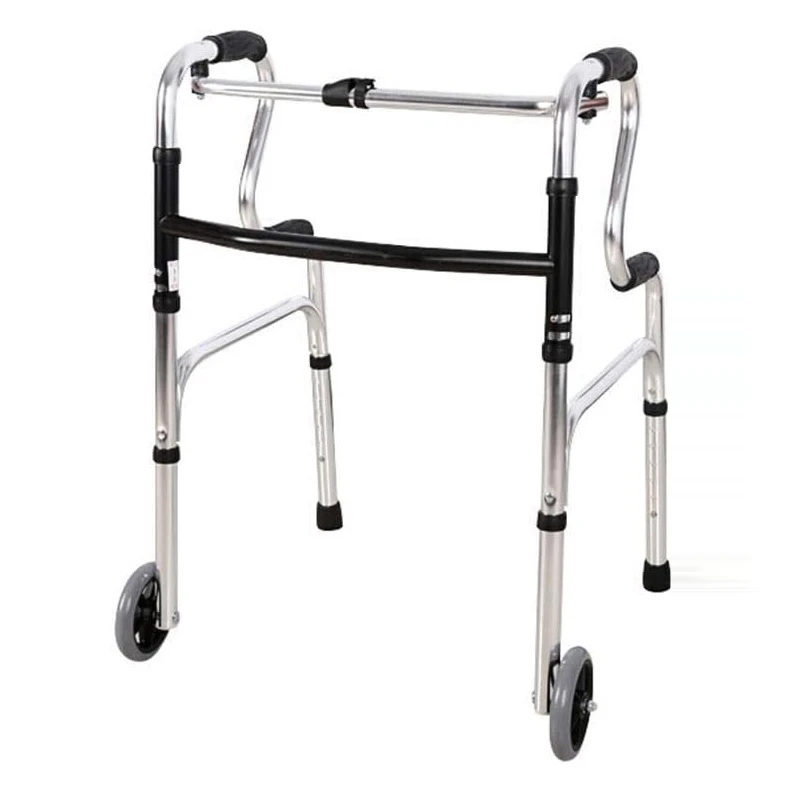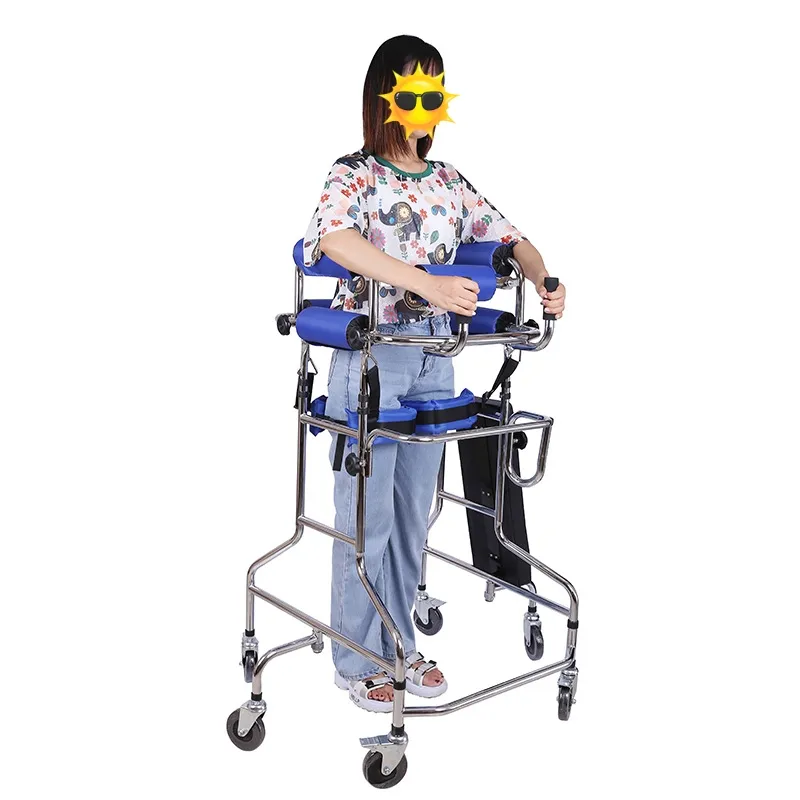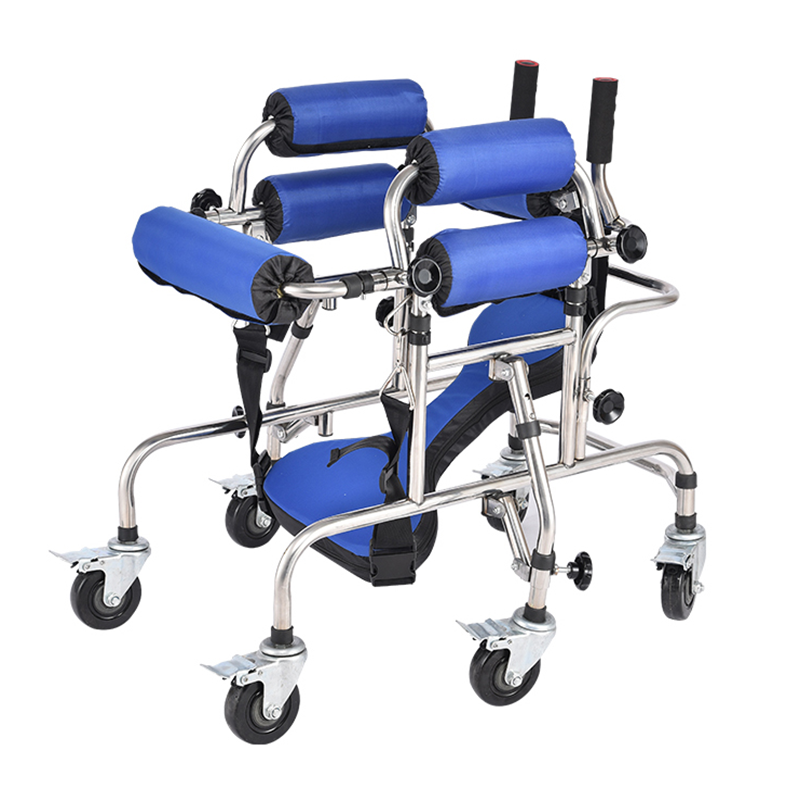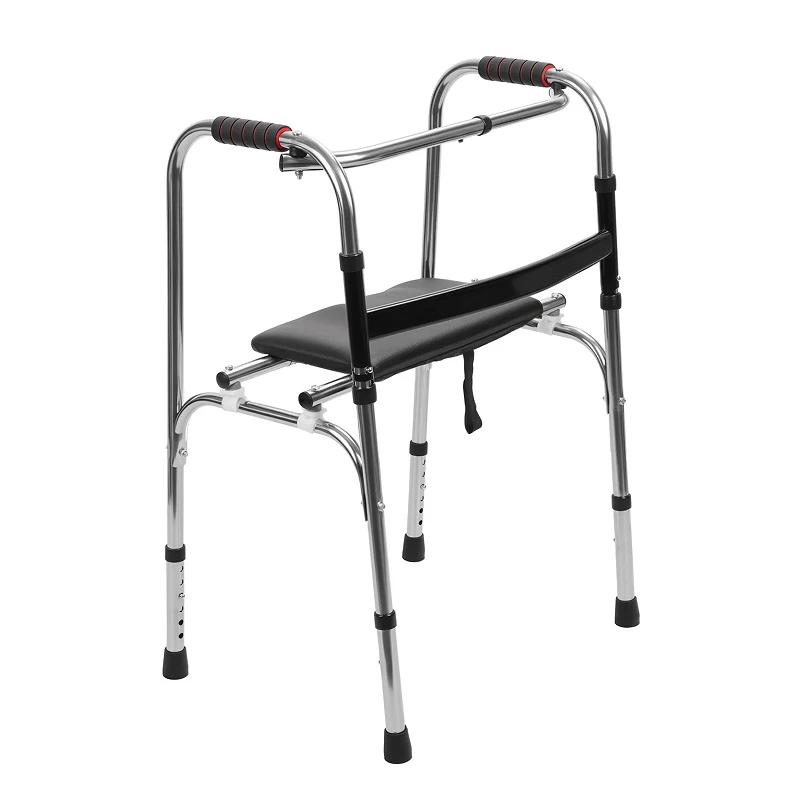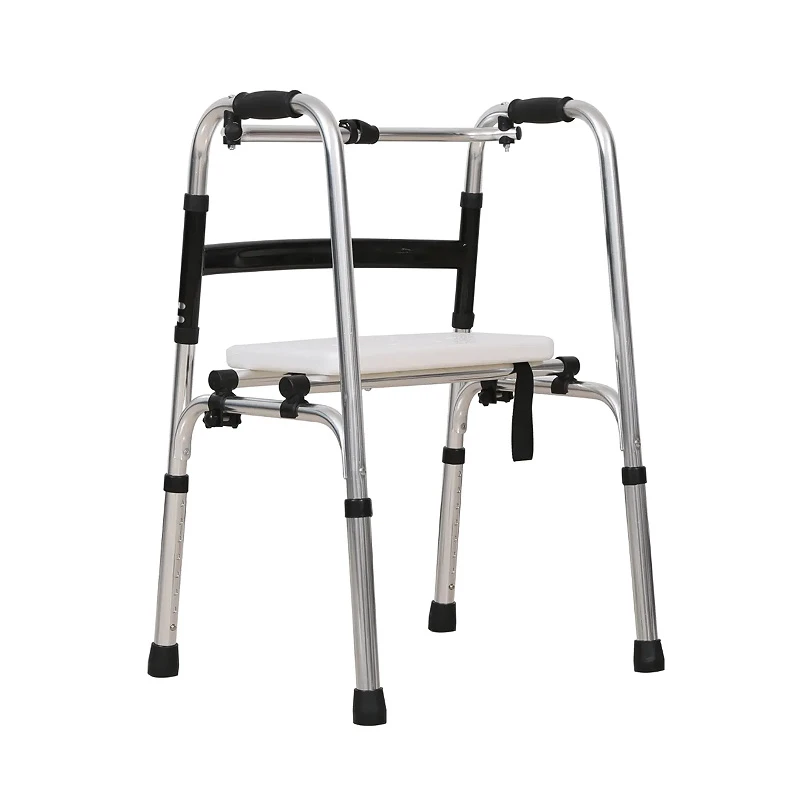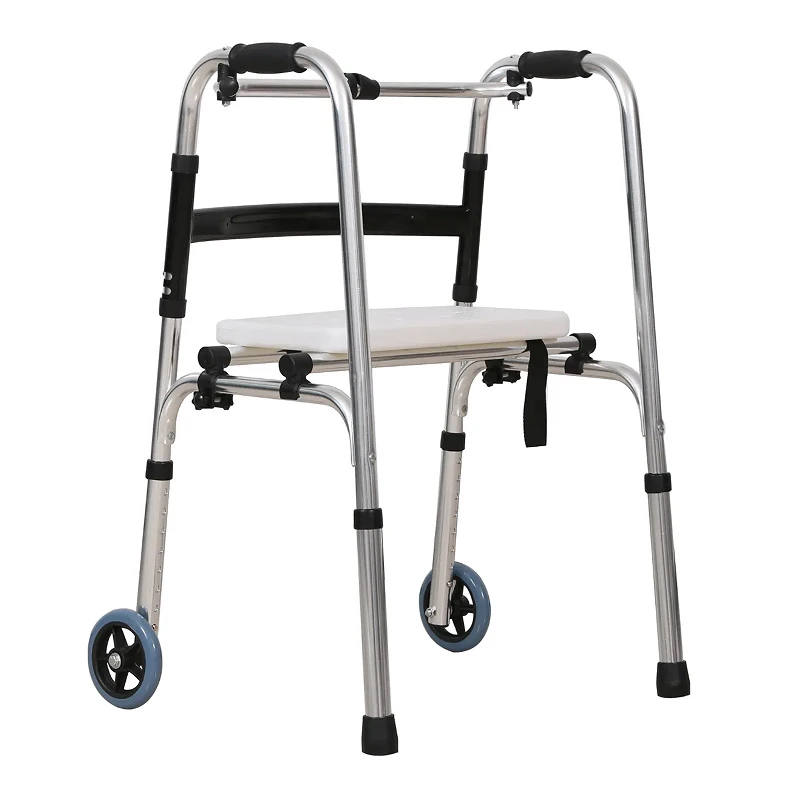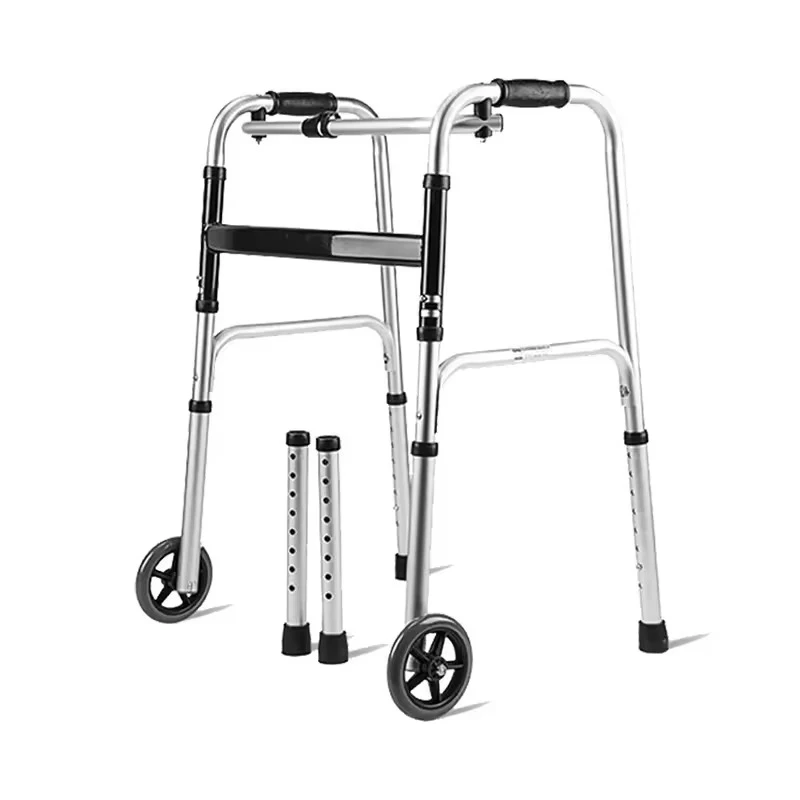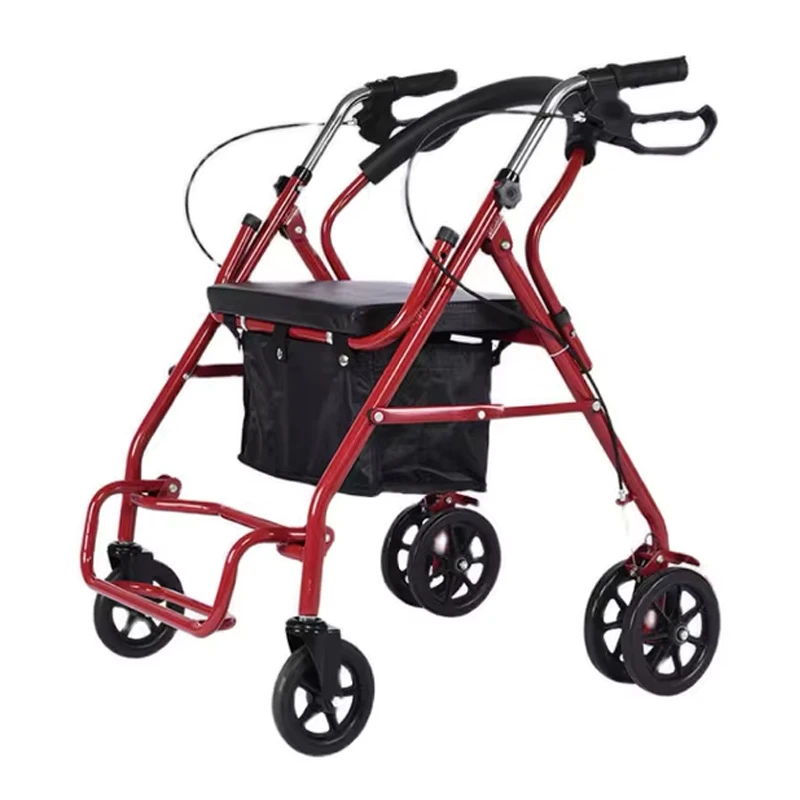
Walkers and rollators are mobility aids designed to enhance stability and provide support for individuals with walking difficulties. The key features of a walker include a lightweight frame, typically made from aluminum or steel, offering durability and ease of use. Walkers provide a stable base with four legs, allowing users to support themselves while walking. Some models feature rubber tips at the base to improve grip and prevent slipping on various surfaces. Rollators, on the other hand, have a similar frame but are equipped with four wheels, offering greater mobility and ease of movement. Many rollators also feature handbrakes that allow users to control speed and stop safely. Both walkers and rollators often come with adjustable height settings, ensuring proper fit for different users and helping prevent strain on the arms, wrists, and back. Rollators also typically include a seat, providing users with a place to rest when needed. Additionally, both walkers and rollators may have storage baskets or trays, allowing users to carry personal items while they move around. Some models are foldable for convenient storage and portability, making them ideal for travel or limited space. Whether a walker or rollator is chosen depends on the individual’s mobility needs, as rollators provide more independence and ease of movement, while walkers offer stability and support for those with limited strength or balance.
How Do Walkers & Rollators Benefit Users and Healthcare Providers?
Walkers and rollators offer numerous benefits for users, enhancing mobility, independence, and safety. For users, these mobility aids provide essential support when walking, reducing the risk of falls and helping individuals regain confidence in their ability to move around. Walkers offer stability and are ideal for those who require extra balance support, especially for short distances or for individuals recovering from surgery or injury. Rollators, with their wheels and brakes, allow for greater freedom of movement, making them suitable for individuals who need more mobility and prefer the ability to rest while walking. The seats on rollators provide a convenient resting option for users, especially when they experience fatigue or need to take breaks during extended walks. These aids are particularly helpful for elderly individuals or people with chronic conditions such as arthritis, who may have difficulty walking long distances or standing for extended periods. For healthcare providers, walkers and rollators are invaluable tools in patient care, as they enable patients to move safely while minimizing the risk of falls or injury. These mobility aids also help streamline the rehabilitation process, allowing healthcare providers to track progress and adjust the mobility aids as needed. Additionally, walkers and rollators are beneficial for caregivers, reducing the physical strain involved in assisting patients with walking and providing a more comfortable experience for both parties.
How To Choose The Right Walker or Rollator For A Patient or Healthcare Facility?
Choosing the right walker or rollator for a patient or healthcare facility depends on several factors, including the individual’s mobility needs, level of independence, and comfort. First, assess whether the user requires the stability of a walker or the mobility and additional features of a rollator. Walkers are ideal for individuals who need a stable base for support but may not require wheels, while rollators are better suited for those who need more freedom of movement and a place to rest. For rollators, consider the number of wheels, as some models have four wheels for smoother movement, while others may have two front wheels and two legs at the back for added stability. Check the weight capacity of the walker or rollator to ensure it can accommodate the user’s weight, and ensure that the height is adjustable to provide a proper fit. Comfort features are also crucial—look for padded hand grips to reduce pressure on the hands and wrists, as well as seats on rollators for resting when necessary. Additionally, consider the terrain where the walker or rollator will be used, as larger wheels are better suited for outdoor use, while smaller wheels are more appropriate for indoor environments. For healthcare facilities, portability and storage are important, so consider foldable models that can be easily stored when not in use. Finally, ensure that the walker or rollator meets safety standards, including secure locking mechanisms on rollators and anti-slip tips or brakes, to prevent accidents and ensure user safety.



 PDF
PDF